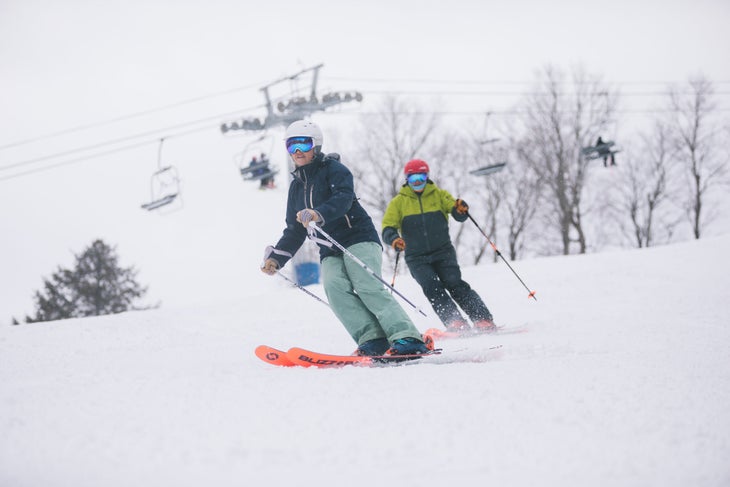Products You May Like
Get full access to Outside Learn, our online education hub featuring in-depth fitness, nutrition, and adventure courses and more than 2,000 instructional videos when you sign up for Outside+
Sign up for Outside+ today.
The former Suicide Six Ski Area in central Vermont debuted its new moniker this week, less than a month after sharing its intentions to move away from its original name due to increasing concerns about mental health issues in our society.

The new name, Saskadena Six, means “standing mountain” in the Abenaki language, and was chosen to recognize the land’s original inhabitants. “The name sends a powerful message of connection both to the deeper history of the mountain with the Abenaki nation and to the present-day community at large,” resort management stated on the website.
The Nulhegan Abenaki tribe, which has utilized the land on which the resort was built for the last 11,000 years, was involved in the naming decision and praised the resort for looking to the land’s roots for inspiration.
Backstory: A Vermont Ski Area Is Ditching Its Controversial Name
“This is more than renaming this place, this is recognizing the original stewardship of this land and providing cultural education to those who visit this standing mountain,” said Chief Don Stevens of the Nulhegan Band of the Coosuk-Abenaki. “By acknowledging the original language of this place, the name Saskadena Six will honor the ancient legacy of the Abenaki alongside that of the generations who have loved it over the past 90 years and into the future.”
The original name came from resort founder Wallace “Bunny” Bertram, who named it after the steep pitch of one of the runs. Bertram, who was inducted into the Ski Hall of Fame of 1981, modeled a primitive rope tow after the ferris wheel pulley system in 1934, and has since been credited with opening the first modern ski area in the U.S.
